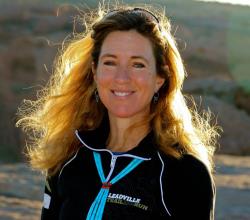Katrin Silva grew up riding dressage in Germany before moving to the United States at age 19 to learn to ride Western. She’s been riding both disciplines for the last twenty years. Read her article on Contact here.
Silva has competed successfully through fourth level dressage on quarter horses, Morgans, Arabians, Hanoverians, and many other breeds. Based in New Mexico, she enjoys improving horse-rider partnerships and firmly believes that good riding is  always good riding, no matter which type of tack a horse is wearing. Check out her blog here.
always good riding, no matter which type of tack a horse is wearing. Check out her blog here.
Here, Silva responds to our discussion on the Wendy Murdoch piece which questioned the need for core strength. Physical therapist Beth Watson wrote about it here.
Silva writes:
I agree with the point this article is making, but disagree with the conclusion that riders should not work on their core strength.
- Yes, functional core stability is more important than pure core strength or a set of six-pack abs for good riding.
- Yes, using one’s entire body through “exercises such as hula hooping, dance, swimming, walking” is a great thing.
- Yes, children don’t do planks and still can ride horses for hours. All true.
 Now for the parts I disagree with:
Now for the parts I disagree with:
The riders I teach are mostly adult amateurs, in their forties, fifties, sixties and even seventies. Most of them are women, and most of them would not describe themselves as athletes. They spend long hours sitting in front of computers at work, so they can afford the pleasure of riding their horse for an hour a day.
My students want to be better riders. A big part of that goal is more effective communication with their horses, and a big part of communicating more effectively with a horse is to use one’s seat in a clear, precise manner. Riders follow the horse’s back with their own back, which allows them to feel what the horse is doing.
The type of “melting into the horse’s back” that I try to teach means that the riders back follows the horse’s back, which requires a constant tightening and releasing of one’s core muscles, even at a walk. This tightening and relaxing happens subconsciously for an experienced rider, or a child, but it still happens. A rider who can’t sit the trot is often tense or stiff, but just as often weak in the core. Most of the time, it’s a  combination of both.
combination of both.
There’s more to good riding than passively following the horse’s back, though a following seat is a prerequisite for a truly effective seat. The ultimate goal is to “sit the movement you want the horse to execute.” On a well-trained horse, I half-halt, stop my seat, and the horse stops. I sit a bigger trot, and the horse extends. I turn my shoulders, and the horse does a shoulder-in, etc. It is like dancing, with the rider being the leading partner.
So, core strength in and of itself does not make a rider better, but it’s nevertheless necessary. And many of the riders I work with have cores that are so weak that regular planking benefits them immensely.
And one more point about functional exercises mentioned by Beth Watson:
Riding itself, if done correctly, is an excellent way of gaining the type of functional core strength and stability most of us need more of. When I rode ten horses a day, every day, my abs were in excellent shape without the daily planking I have to do now to maintain them.